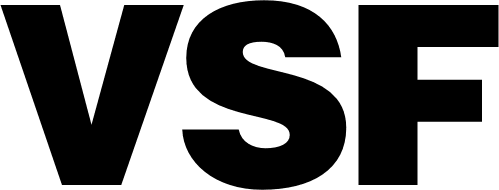This September VSF is excited to present The Harrisons’ Survival Piece #1: Air, Earth, Water, Interface: Annual Hog Pasture Mix, 1970-1971 in alignment with PST: Art & Science Collide. The first in their visionary series of Survival Pieces, “Hog Pasture,” as it is known by Harrison’s fans, emerged from a direct dialog with the most visionary and boundary pushing artists of the late 1960’s and early 1970’s. The impact of the Earth Day movement and the nascent cultural awareness that human beings were rapidly depleting the planet’s natural resources ignited a deep and sincere conversation within the art world about the stakes of art-making in the post-war, post-1968 world.
While later survival pieces highlighted a culminating harvest feast, Survival Piece #1 is focused on growth. The rectangular form of the raised planter bed and the grid of grow lights above echo sculptural innovations by artists like Dan Flavin, Donald Judd, and Richard Morris; however, Newton Harrison had by this time decided that a sculpture or a painting was not enough. His artwork needed to not only have a moral purpose, it needed to strive to restore the earth and protect the abundant future of humans on our planet.
In 1971, shortly after their first foray into ecological art, Making Earth (which VSF exhibited earlier this year at Frieze LA and is now in the collection of the Los Angeles County Museum of Art) Newton and Helen heard from David Antin that Virginia Gunter at the MFA Boston was curating a show titled Earth, Air, Fire, and Water: Elements of Art and wanted to include their work alongside contemporaries including Robert Smithson, Michael Heizer, Hans Haacke, and others. Exploring ideas of growth and change, Gunter’s vision for the exhibition was meant to challenge conservative, formalist, Greenbergian ideas about art as well as expectations of the museum as an institution that primarily collected unchanging pictures and objects that somehow articulated the best ideas and techniques of the time in which they were made.
Interested in building on his use of artificial lights, Newton decided that he should actually grow something. He commissioned one of his painting students to look through seed catalogs to find a mixture that was “totally singular,” eventually landing on R.H. Shumway Seedsman’s Annual Hog Pasture Mix. In Boston, a large raised planter bed was built in a basement gallery of the museum, agricultural grow lights were installed in a parallel grid from the ceiling, a potent mix of manure, compost, worm castings, and other rich grow media were added to the planter bed, the seed mix was added, and a small pasture grew there with alarming speed. While Gunter wouldn’t allow a hog to come and graze the original hog pasture, subsequent exhibitions of the work, including Ends of the Earth: Land Art to 1974 curated by Miwon Kwon and Phillip Kaiser at MoCA in 2012, have brought the work to its natural conclusion and invited a pig in to enjoy the rich, velvety mix of legumes and grasses. Similarly, VSF has invited a hog to harvest the indoor meadow during the exhibition’s closing ceremony on October 17, 2024. The remaining pasture, earthworms, and soil mix will be gifted to visitors. We hope that you will join us while our porcine guest enjoys the first survival piece feast envisioned by Helen and Newton Harrison.
-
The Harrison Studio consists of Newton Harrison (1932—2022) and Helen Mayer Harrison (1927—2018). Often simply referred to as “The Harrisons,” the husband and wife team are leading pioneers of the Ecological Art movement. During their prolific career, the Harrisons have been the subject of over 100 solo exhibitions, and have been included in over 250 group exhibitions. For nearly fifty years, the Harrisons have produced work across a vast range of disciplines, working in collaboration with biologists, ecologists, historians, activists, architects, urban planners, and fellow artists to initiate dialogues and create works exploring biodiversity and community development. They have shown work at the 2019, 1980, and 1976 Venice Biennales; Taipei Biennial (2018); documenta 8 (1987); the Los Angeles County Museum of Art, California; The Whitney Museum of American Art, New York; Museum of Modern Art, New York; The Tate, London, United Kingdom; Museum of Contemporary Art Los Angeles; The Hirshhorn Museum, Washington, D.C.; Cooper Hewitt Museum, New York; Museum of Contemporary Art, Chicago, Illinois; MoMA PS1, New York; Berkeley Art Museum; Boston Museum of Fine Arts, Massachusetts; San Francisco Museum of Modern Art; Kunstmuseum Bonn, Germany; and Kunstverein Hamburg, Germany. Works by the Harrisons are included in many major permanent collections including the Whitney Museum of American Art; the Centre Pompidou, Paris, France; The Museum of Modern Art, New York; the Los Angeles County Museum of Art; and the Museum of Contemporary Art, Chicago. Newton Harrison was a Professor Emeriti at University of California, Santa Cruz, and University of California, San Diego. “Helen and Newton Harrison: California Work” will be exhibited at the La Jolla Historical Society as part of the Getty’s Pacific Standard Time initiative in 2024.



